Barbell back squats are the exercise that many bodybuilders love to hate. That’s because they love the way that squats build leg size and strength but hate how hard they are. Unless you’re going very light, there is no such thing as an easy squat workout!
However, to avoid serious injury, squats should always be done using a squat rack or, better still, a full power cage.
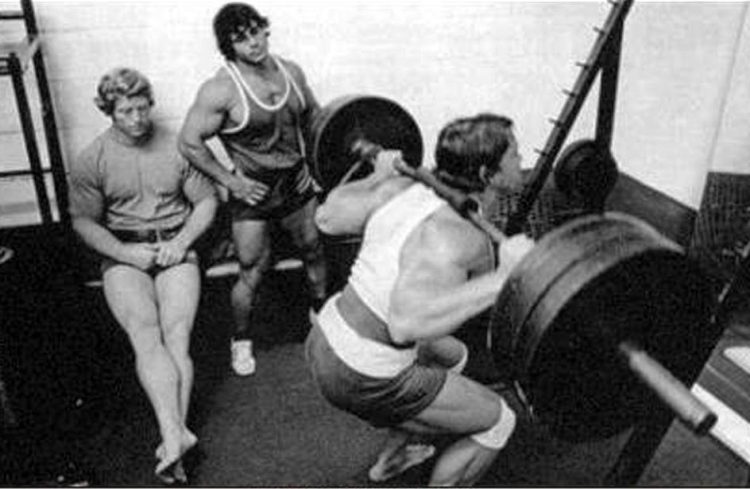
Using a rack or cage makes getting under the bar much easier and also means you won’t get pinned under a heavy weight if you cannot complete a rep. Providing you remember to set the safety bars, that is!
Unfortunately, not all gyms have squat racks, and because they’re big and expensive, they may be impractical for some home gyms, too.
However, this doesn’t mean you are doomed to having skinny, weak legs. After all, friends don’t let friends skip leg day!
Level Up Your Fitness: Join our 💪 strong community in Fitness Volt Newsletter. Get daily inspiration, expert-backed workouts, nutrition tips, the latest in strength sports, and the support you need to reach your goals. Subscribe for free!
To that end, for this article, we’ve created a leg workout that doesn’t require a squat rack. In fact, it doesn’t involve any machines or even barbells. As such, it’s ideal for home lifters and anyone without a squat rack.
That said, it’s still a demanding workout that will help you build bigger, more muscular legs even without barbell back squats.
Leg Anatomy 101
While you don’t necessarily need to know the names of all the muscles this workout involves, we understand that some people value this level of detail. So, these are the main muscles you’ll be training during our no-squat leg workout.
Quadriceps – located on the front of your thighs, the quads extend your knee and also flex your hip. There are four quadriceps: the vastus lateralis, vastus medialis, vastus intermedius, and rectus femoris.
Hamstrings – there are three hamstring muscles: semimembranosus, semitendinosus, and biceps femoris. These muscles, which are located on the back of your thighs, are responsible for knee flexion and hip extension.
Adductors – these muscles are located on the inside of your thigh. They’re responsible for drawing your thighs in toward the midline of your body, which is a movement called adduction. The adductors are longus, brevis, and magnus.
Gluteus maximus – known as the glutes for short, and basically your butt, the gluteus maximus is the largest muscle in the human body. Its primary function is the extension of the hip.
Abductors – located on the outside of your hip and thigh, the abductors are responsible for lifting your leg out and away from the midline of your body. The abductors are gluteus minimus, gluteus medius, and tensor fascia latae.
Triceps surae – this is the collective name for the calf muscles: gastrocnemius and soleus. Together, these muscles extend your ankle in a movement called plantar flexion. Gastrocnemius, which is the largest and uppermost of the two calf muscles, is also involved in knee flexion.
No-Squat Leg Workout Overview
This workout is low-tech, and you should be able to do it in the most poorly-equipped gym. All you really need is some dumbbells, a bench, and space to move around. While it is a bodybuilding workout, it will also increase general strength and muscular endurance.
It’s meant to be performed as part of a split routine, where you train different muscle groups on different days, i.e.,
| Monday | Tuesday | Wednesday | Thursday | Friday | Saturday | Sunday |
| Legs | Chest & Triceps | Rest | Back & Biceps | Rest | Shoulders | Rest |
Alternatively, you could do this workout twice if you want to jump-start lower body growth.
For example:
| Monday | Tuesday | Wednesday | Thursday | Friday | Saturday | Sunday |
| Legs (1) | Chest & Triceps | Rest | Back & Biceps | Legs (2) | Shoulders | Rest |
Regardless, you should begin each workout with a warm-up to prepare your muscles and joints for what you are about to do.
Start with 5-10 minutes of cardio, preferably using a full-body exercise, such as rowing or an assault bike.
Then, when your blood is pumping, and you’re feeling warm, do some dynamic flexibility and mobility exercises, focusing on your knees, hips, and lower back.
| No: | Exercise | Sets | Reps | Recovery |
| 1 | Deficit Bulgarian split squat | 4 | 8-10 per leg | 90 seconds |
| 2 | Dumbbell Romanian deadlift | 4 | 8-10 | 90 seconds |
| 3a | Sissy squat | 3 | 12-15 | 90 seconds |
| 3b | Short step walking lunges | 12-15 per leg | ||
| 4 | Goblet box squat | 3 | 10-12 | 60 seconds |
| 5 | Single-leg calf raise | 3 | 12-15 per leg | 60 seconds |
| 6 | Tip-toe farmer’s walk | 3 | 15-20 yards | 60 seconds |
Regardless, you should begin each workout with a warm-up to prepare your muscles and joints for what you are about to do.
Start with 5-10 minutes of cardio, preferably using a full-body exercise, such as rowing or an assault bike.
Then, when your blood is pumping, and you’re feeling warm, do some dynamic flexibility and mobility exercises, focusing on your knees, hips, and lower back.
| No: | Exercise | Sets | Reps | Recovery |
| 1 | Deficit Bulgarian split squat | 4 | 8-10 per leg | 90 seconds |
| 2 | Dumbbell Romanian deadlift | 4 | 8-10 | 90 seconds |
| 3a | Sissy squat | 3 | 12-15 | 90 seconds |
| 3b | Short step walking lunges | 12-15 per leg | ||
| 4 | Goblet box squat | 3 | 10-12 | 60 seconds |
| 5 | Single-leg calf raise | 3 | 12-15 per leg | 60 seconds |
| 6 | Tip-toe farmer’s walk | 3 | 15-20 yards | 60 seconds |
Workout Notes:
Exercises 3a and 3b are to be performed as a superset. In other words, do a set of sissy squats immediately followed by a set of short step walking lunges. Rest a moment and then repeat the pairing, doing three supersets in total.
Exercise 7, the tiptoe farmer’s walk, is to be done for distance instead of reps. If you have no way of measuring out 15-20 yards, just pace it out and assume that one stride is equal to one yard.
Exercise Descriptions
There are two ways to do any exercise – the right way and the wrong way. The right way is safe, effective, and usually produces the best results. The wrong way could cause injury and is often not as productive.
Level Up Your Fitness: Join our 💪 strong community in Fitness Volt Newsletter. Get daily inspiration, expert-backed workouts, nutrition tips, the latest in strength sports, and the support you need to reach your goals. Subscribe for free!
So, get the best from this no-squat legs workout by doing each exercise correctly.
1. Deficit Bulgarian split squat
The Bulgarian split squat is a superb exercise for building bigger, more muscular legs, one side at a time. It’s also a helpful balance and mobility exercise. With this variation, you’re going to raise your front foot as well as your back foot. This increases your range of motion, making this already great exercise even better.
How to do it:
- Stand with your back to a knee-high bench. Place a 4 to 6-inch high stack of weight plates or firm exercise mats in front of you.
- Place your back foot on the bench behind you and your other foot on the raised platform in front of you.
- Bend your legs and descend until your rear knee is below the level of your front foot.
- Stand up and repeat.
- Swap legs and then do the same number of reps on the other side.
- Make this exercise harder by holding dumbbells in your hands.
Read more about Bulgarian split squats here.
2. Dumbbell Romanian deadlift
Romanian deadlifts target your glutes, hamstrings, and lower back, collectively known as your posterior chain. While this exercise can be done with a barbell, it’s a little more low-back-friendly when done with dumbbells. Using dumbbells means you can keep the weights next to your legs instead of in front of them.
How to do it:
- Hold a dumbbell in each hand and stand with your feet hip-width apart. Brace your abs and pull your shoulders down and back.
- With your knees slightly bent but rigid, push your hips back and lean forward, lowering the weights down the side of your legs. Do not round your lower back.
- Drive your hips forward, stand back up, and repeat.
3a. Sissy squat
Sissy squats are an old-school leg exercise that targets your quads. In many ways, it’s a lot like doing bodyweight leg extension. It comes very close to isolating your quads without resorting to using a machine. This exercise is a lot tougher than it looks, so don’t go too heavy too soon!
How to do it:
- Stand next to a wall or some other object you can use for balance.
- Rise up onto your tiptoes.
- Push your hips and knees forward and squat down as you simultaneously lean back. Descend as far as you can, ideally until your shins are roughly parallel to the floor.
- Drive your toes into the floor and stand back up.
- Tense your quads at the top of each rep and repeat.
- Without resting, move immediately to the next exercise.
Make this exercise harder by holding a dumbbell down by your side or plate across your chest with the hand furthest from the wall/support.
Learn even more about sissy squats here.
3b. Short step walking lunges
Lunges are another excellent unilateral leg exercise. That means it works one side at a time. Taking a shorter-than-normal step increases quads activation, making this a great pairing with quad-dominant sissy squats. This superset will produce a deep burn and pump in your thighs.
How to do it:
- Stand with your feet together and your arms by your sides. Hold dumbbells if you wish.
- Take a small step forward, bend your legs, and lower your rearmost knee down to just behind your front heel.
- Step up and forward into another rep.
- Continue alternating legs for the specified number of reps.
4. Goblet box squat
Not having a squat rack does not mean that you can’t do ANY type of squat. We use a squat rack to make getting into the correct starting position more manageable and avoid getting crushed by a heavy barbell if you’re unable to complete a rep.
Goblet squats make getting into the correct starting position pretty easy, and you can lower the weight down anytime you feel you are unable to continue.
Doing goblet squats to a box increases posterior chain activity, making this a great end to your leg workout.
How to do it:
- Hold your dumbbell vertically in front of your chest. Stand in front of a knee-high exercise bench, with your feet about shoulder-width apart, toes turned slightly outward. Brace your core.
- Push your hips back, bend your knees, and squat down until you are sitting on your bench. Do not round your lower back or relax!
- Drive your feet into the floor and stand up.
- That’s one rep – keep going!
Learn more about goblet squats here.
5. Single-leg calf raise
When it comes to calf training, a lot of people automatically gravitate toward the calf raise machine. That’s no bad thing, but you don’t need to use a machine to turn your calves into huge cows! In fact, this unilateral calf exercise may be superior to the calf raise machine because using one leg at a time means you’ll need to work harder to stabilize your ankle, increasing muscle activation in the process.
How to do it:
- Stand on one leg on a 4-6″ high step. Place the ball of your foot on the edge of the step so your heel is free to move up and down. Cross your ankles and use your hands for balance.
- Keeping your supporting knee straight, rise up onto your tiptoes and then lower your heel down toward the floor.
- Continue for the prescribed number of repetitions and then change legs.
- Hold a dumbbell in one hand to make this exercise harder.
Find out more about this exercise here.
6. Tiptoe farmer’s walk
Have you ever noticed how a lot of overweight people have HUGE calves? It seems that walking around with a lot of weight on your calves could help them grow. This exercise is designed to simulate this effect.
How to do it:
- Hold a heavy dumbbell in each hand using straps to reinforce your grip if needed.
- Rise up onto your tiptoes.
- Without lowering your heels, walk around your training area until your calves are pumped and burning.
Related: Farmer’s Walk Guide: How-To, Muscles Worked, Variations, and Benefits
No-Squat Leg Workout – Wrapping Up
There is no denying that squat is the crowned king of lower body exercises. They’re a great way to build leg mass and strength. After all, squats have been part of bodybuilding training forever, and entire workouts have been written around this proven exercise.
That said, to do squats safely, you really need a squat rack. Squatting outside of a squat rack is a recipe for serious injury.
The good news is that you don’t have to do squats to build an impressive pair of wheels. Providing you’re prepared to embrace some alternative exercises, you can increase leg mass and strength without a squat rack. In fact, all you really need is some dumbbells.
Not convinced? Try our no-squat leg workout and see!

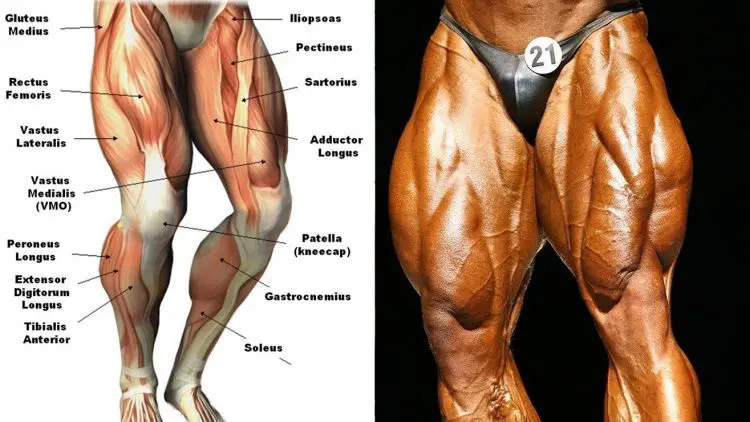



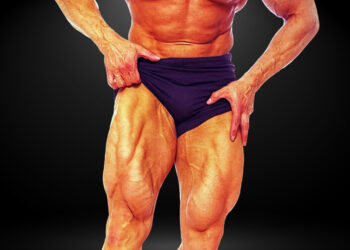
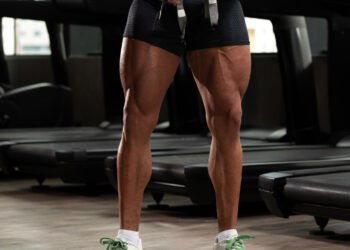
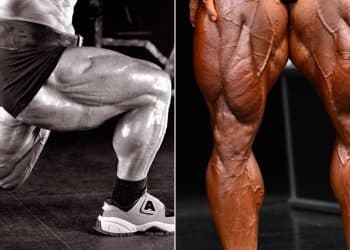


How often can I do this workout?
1-2 times a week depending on your needs and goals, and what training split you are following.